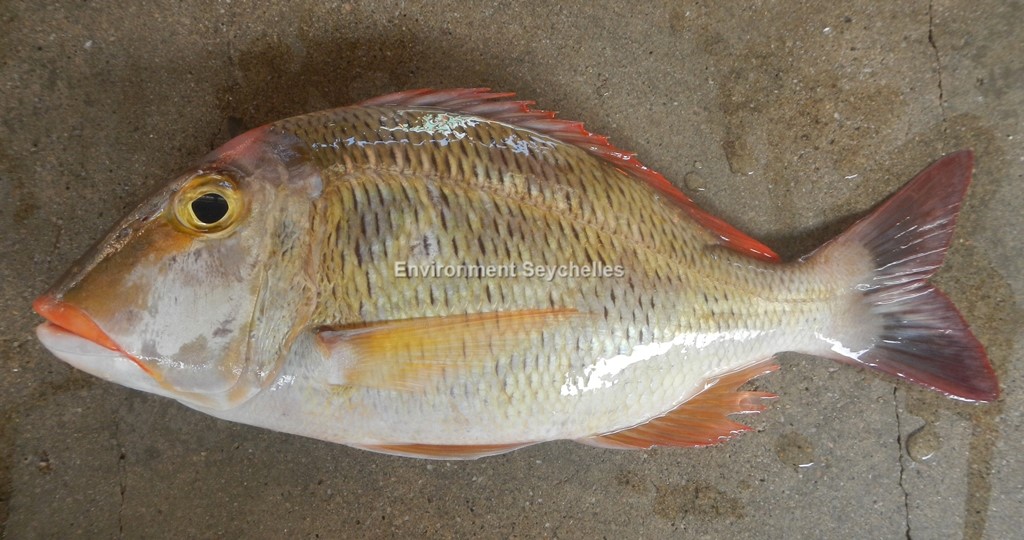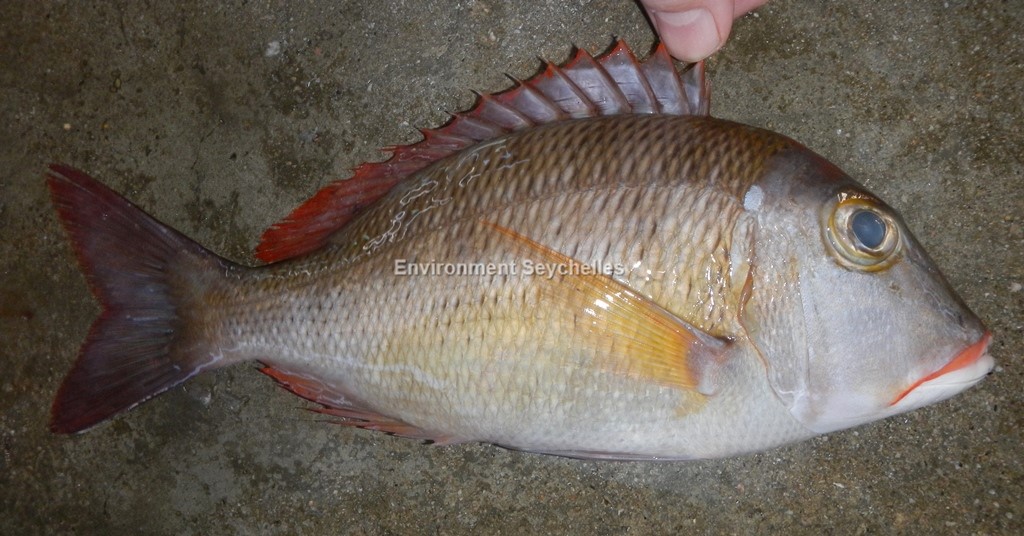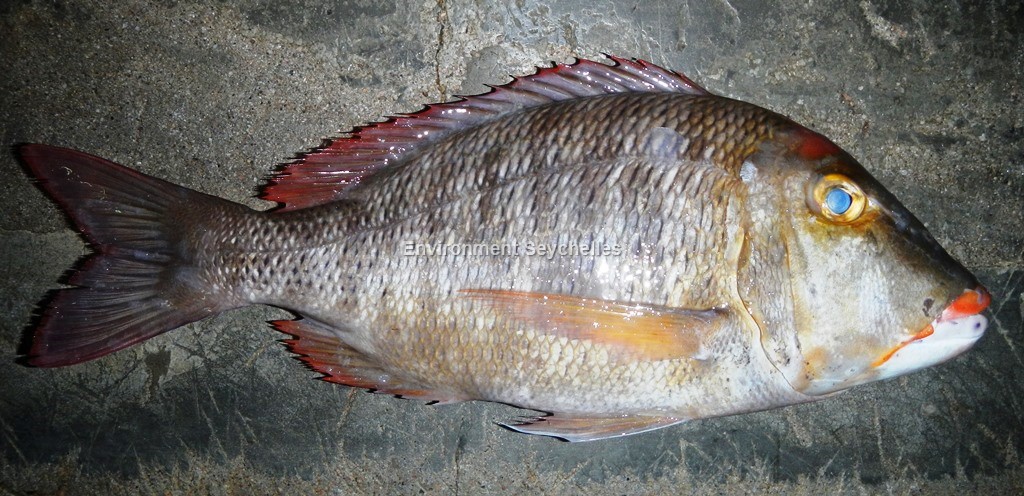Description:
Dorsal spines: 10; Dorsal rays: 9; Anal spines: 3; Anal rays: 8.
Body relatively deep. Snout moderately short. Posterior nostril an oblong longitudinal opening positioned at approximate mid-point of orbit and anterior nostril.
Body yellow to greenish blue, lighter ventrally, sometimes with nine or 10 dusky bars. Scales with darker edge and some with dark bars. Head purplish grey with red blotch
on the nape. Upper lip red. Red bar at base of pectoral (often absent in Mahe plateau population) fin sometimes extending above and below and to the operculum edge. Base
of upper and sometimes lower rays of pectoral fin red. Margin of dorsal fin red, membranes of dorsal rays orange-red to brown-red. Base tips of pelvic fin often red. Anal fin
white with distal portions of membranes reddish. Caudal fin brown becoming reddish distally.
Size:
Maturity: Lm unknown. Range 19 - ? cm. Max Length: 65 cm TL.
Habitat and Ecology:
Inhabits coral reefs and adjacent sandy and seagrass areas (depth 2-100 m). Feeds primarily on echinoderms (particularly sea urchins), crustaceans and fishes. A protogynous
hermaphrodite. Sex change was found to commonly occur between the ages of 5 and 6 years. A diandric species.
Fishery Status:
This species is not protected or subject to fishery regulations. It is caught in the hand line fishery, where it is a frequent and occasionally abundant component of the catch. (see Notes section below).
Notes:
Assessed as Endangered in 2018 for the IUCN Red List (Al Abdali et al. 2019): "As a long-lived and large emperor species, it is particularly susceptible to over-exploitation,
and localised declines have been reported off Kenya and Egypt, as well as remote offshore islands including Mauritius and Rodrigues. Species-specific data quantifying
population trends are limited, but where information is available (e.g., Rodrigues and Egypt), the data suggest population declines exceeding 60% over three generation
lengths (45 years: 1973-2018). It is likely exploited at similar or higher levels throughout the vast majority of its range, such that the limited decline data available
are considered indicative of its global status."
The status of this species on the Mahe plateau should be assessed at the earliest opportunity.
References:
Al Abdali, F.S.H. et al. (2019). Lethrinus mahsena. The IUCN Red List 2019: https://dx.doi.org/10.2305/IUCN.UK.2019-2.RLTS.T16720057A16722325.en. (16/06/20).
Carpenter, K.E. & Allen, G.R. (1989). FAO Species Catalogue. Vol. 9 Emperor Fishes and Large-eye Breams of the World (Family Lethrinidae). An annotated and Illustrated
Catalogue of Lethrinid Species Known to Date. UNFAO Rome. ISBN 92-5-102889-3
Froese, R. & D. Pauly. (Eds.) (2019). FishBase. https://www.fishbase.se/summary/Lethrinus-mahsena.html (10/05/19).
Nevill, J. (2013). A Species Identification Guide for Commonly Caught Fish in the Seychelles Near-Shore Artisanal Fishery. GOS/UNDP/GEF.
Citation:
Nevill, J.E.G. (2019). Lethrinus mahsena, Sky emperor. Seychelles Seatizens. www.seatizens.sc. https://seatizens.sc/species/lethrinus-mahsena-forsskal-1775/ (edited 16/07/22).




There are no comments